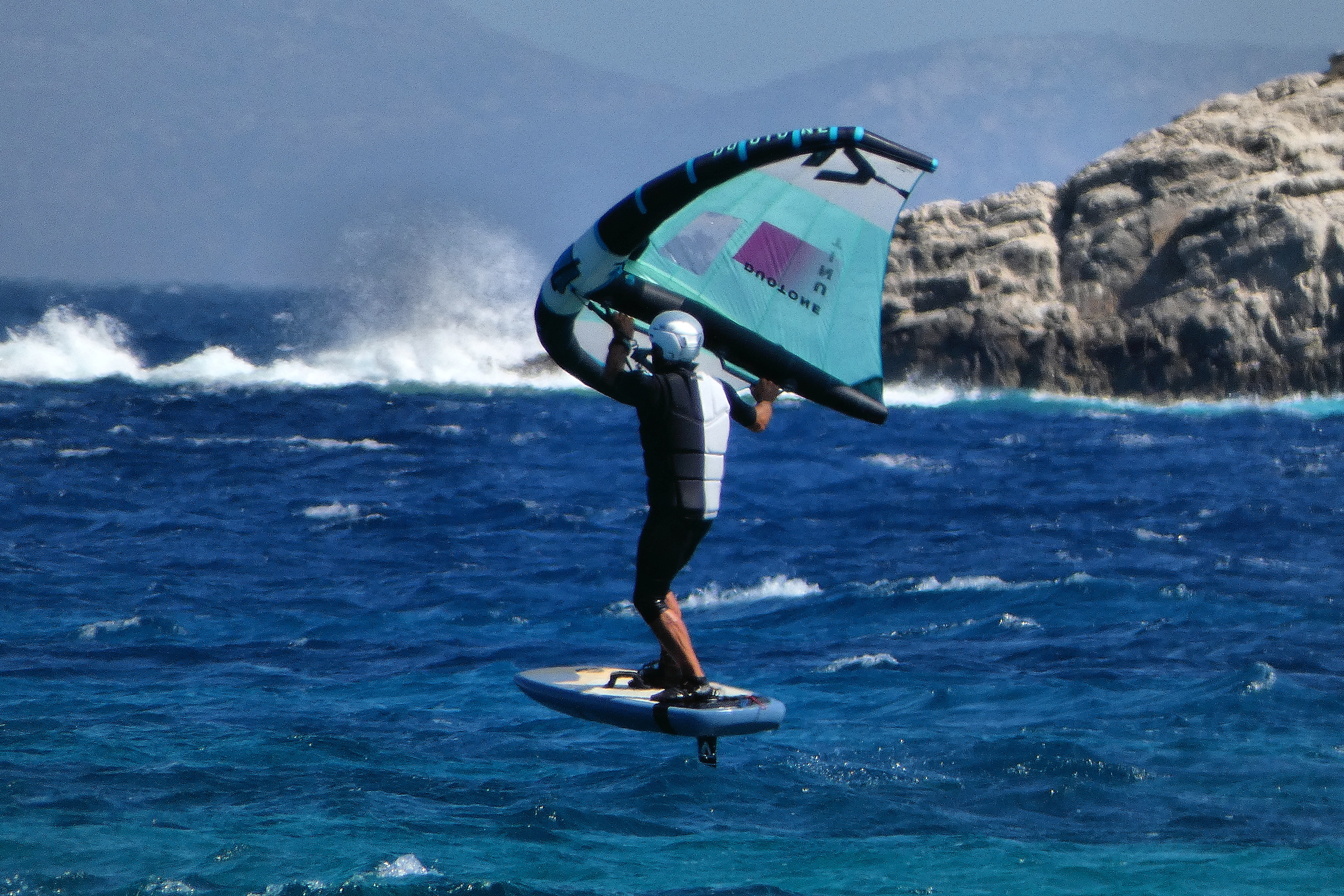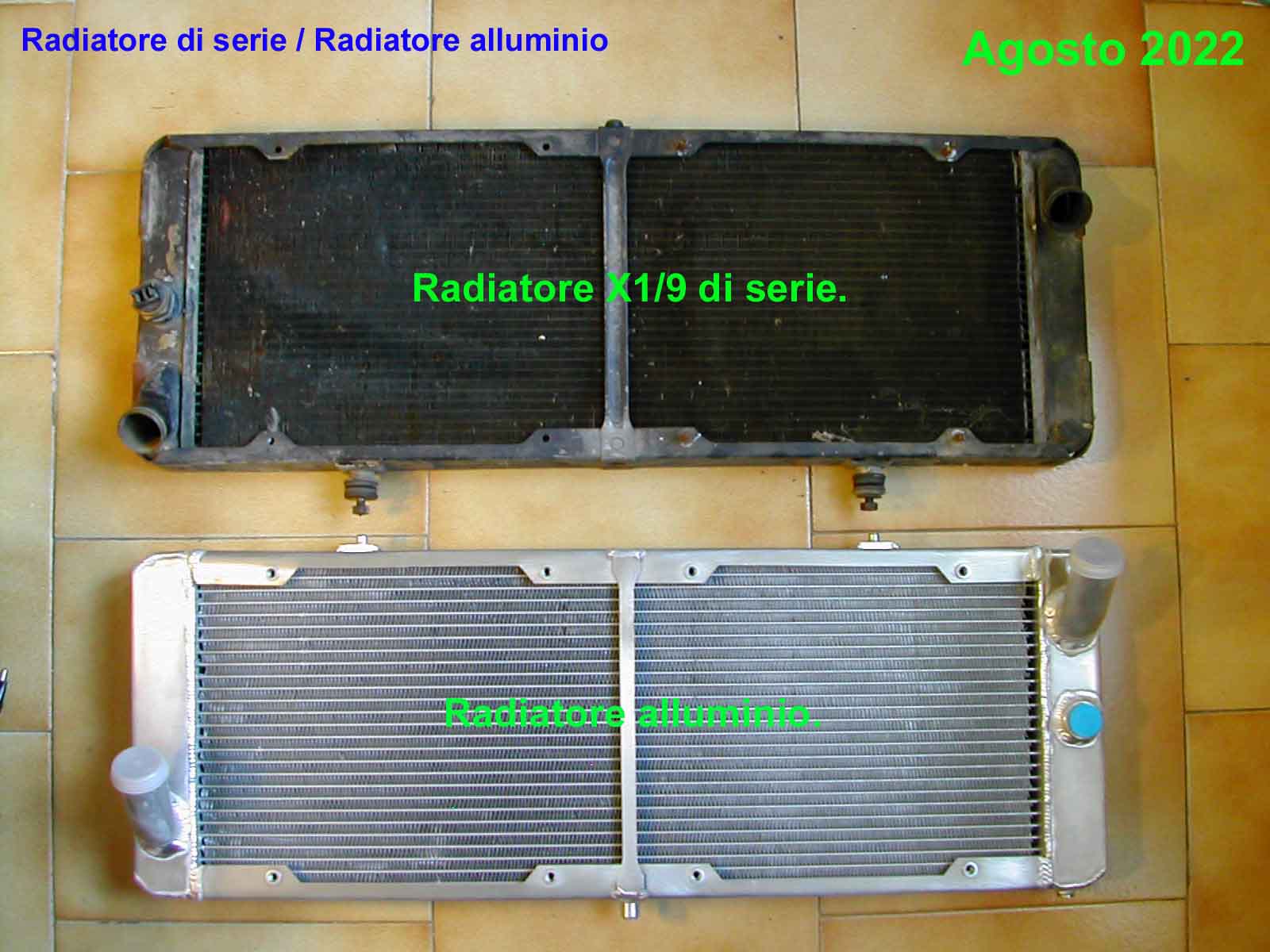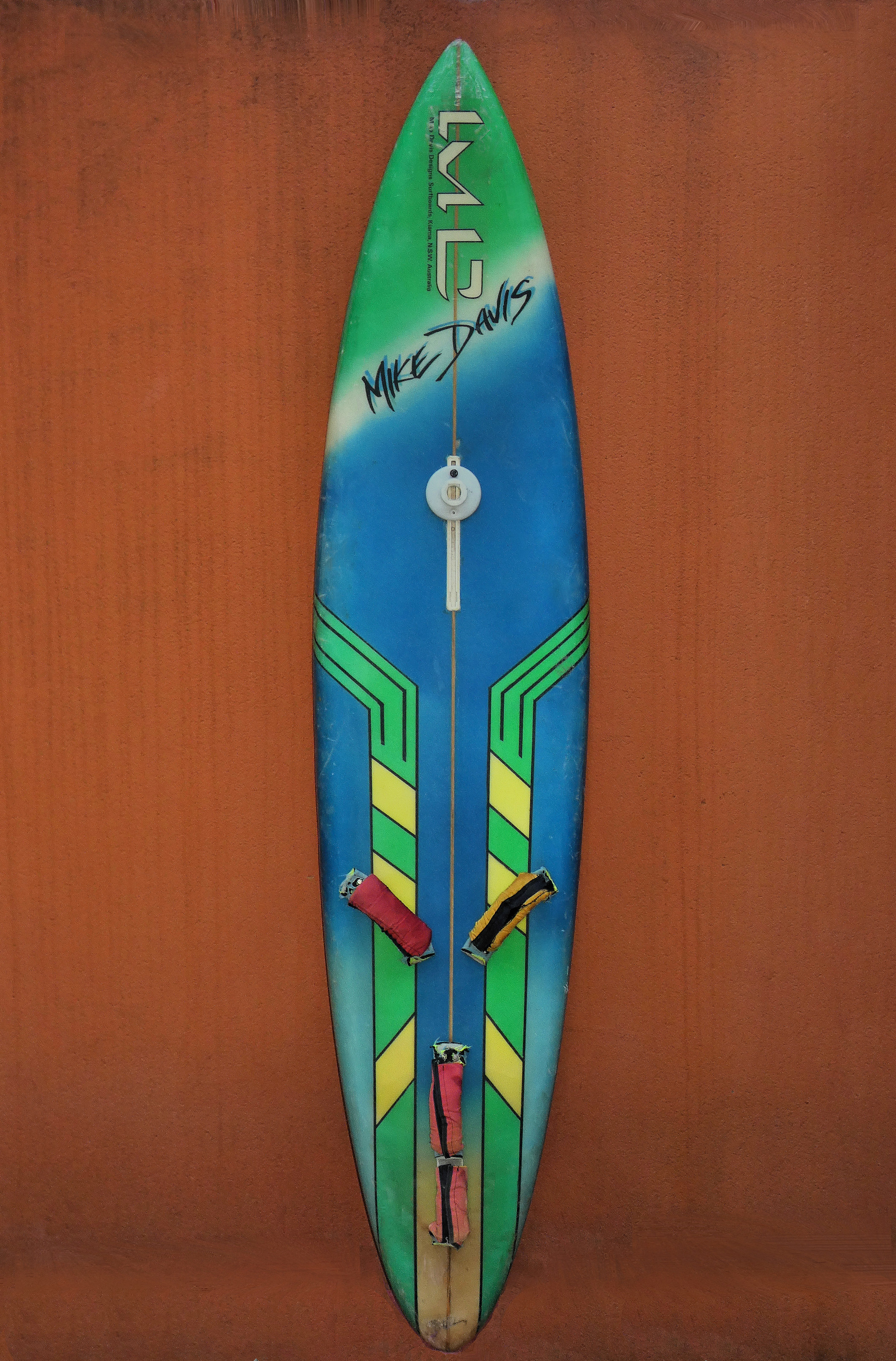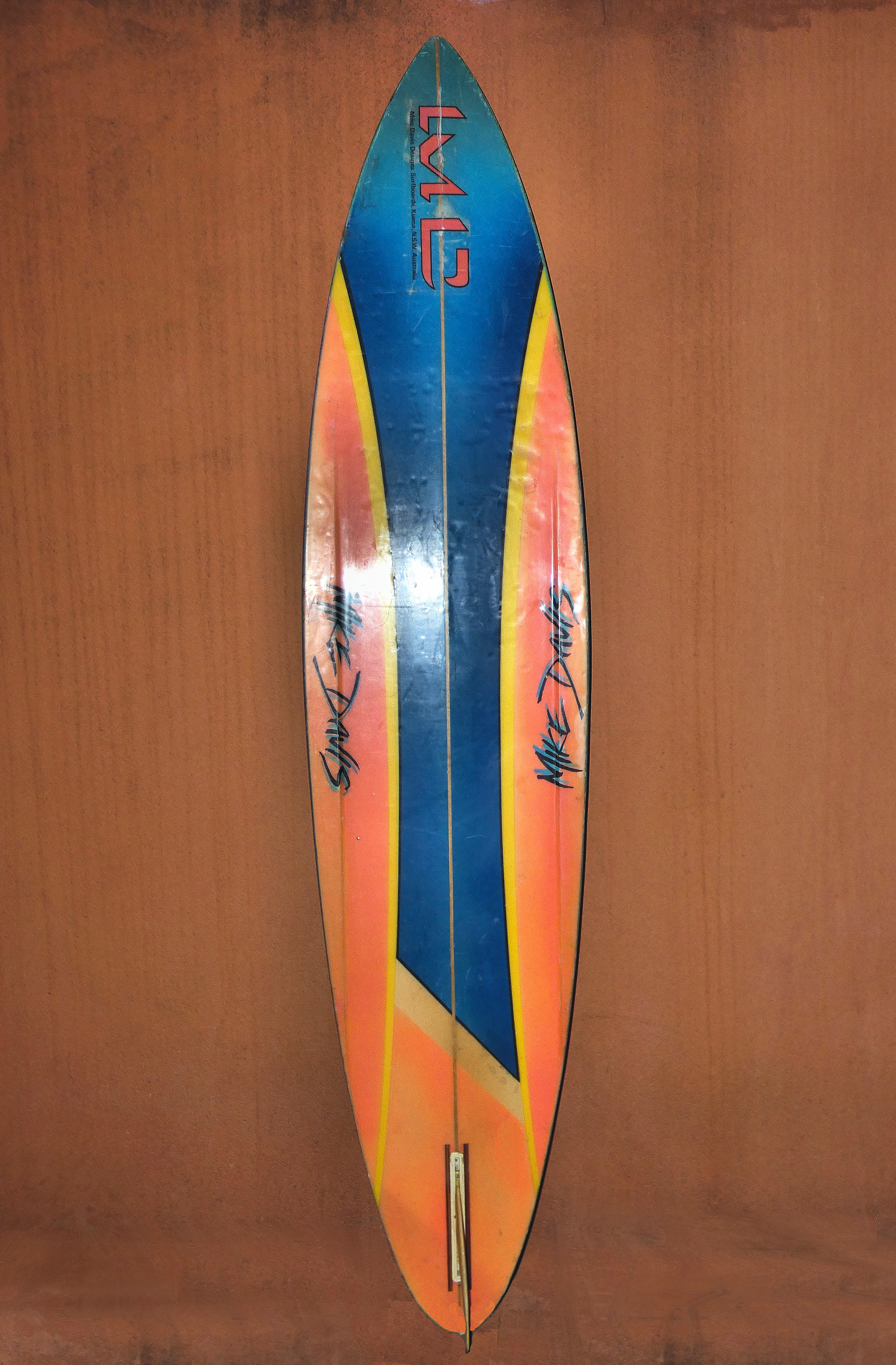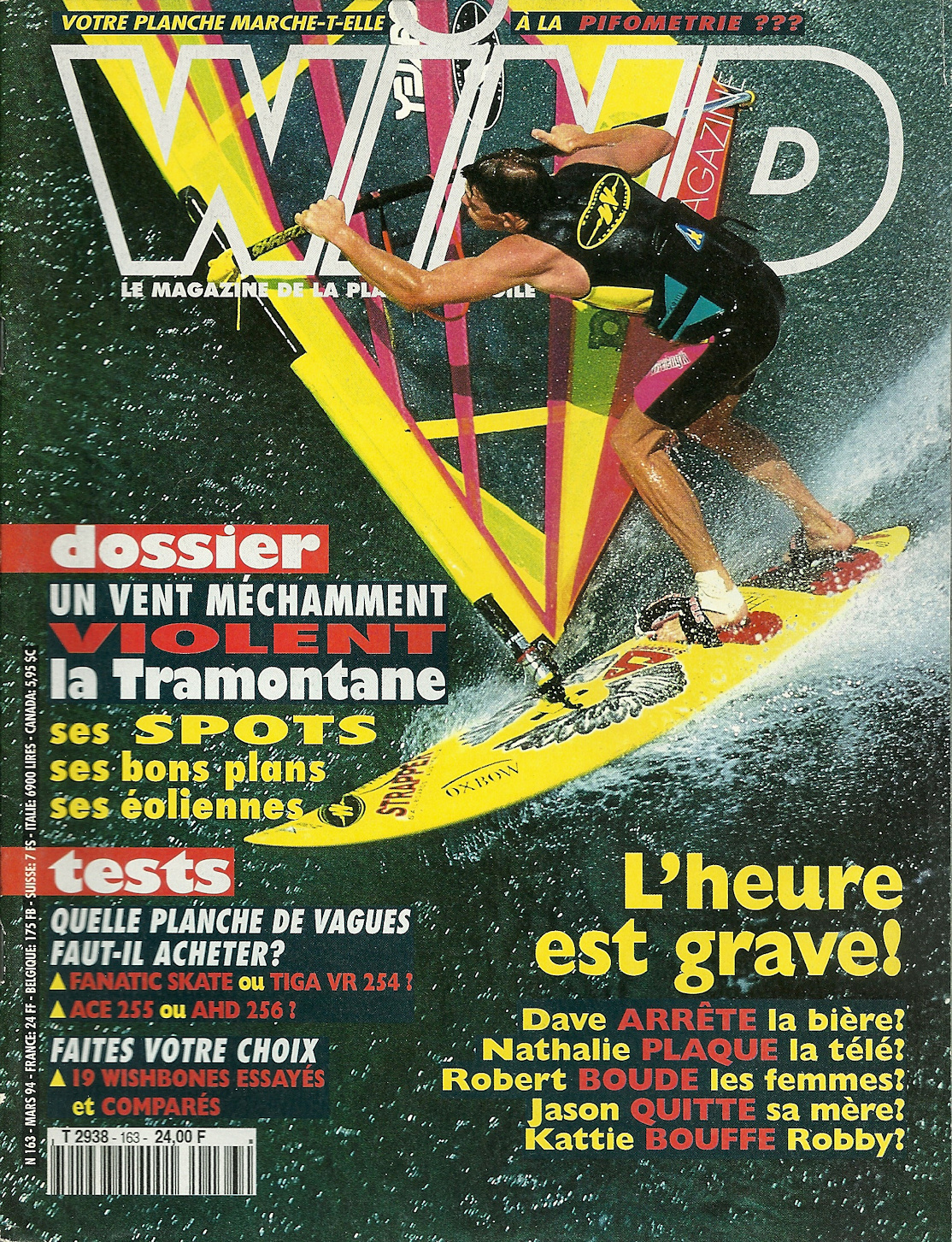THE COMPLETE GUIDE TO WANNABE WINGERS… (IN THEIR SIXTIES)
Some (rather long) context to start with, which I hope will not sound too unfamiliar
I am 63 turning 64 in a couple of months.
I have been windsurfing with my wife and a few good friends such as Dimitris and Kostas for more than 25 years now and, like most of us I guess, I am not getting any better -if anything I am getting worse… and I was never too good at it anyway.
So, back in 2020, when I bumped into a YouTube video of a young guy flying over waves on a foilboard with a small kite in his hands, I thought that it was the coolest thing I have seen for a very long time!
Amazing how smooth and effortless he made it look and I said to myself, “yeah right but, he is probably one of those ultra-charismatic little pr.cks who use to ride monster waves in Hawaii since they were 3 years old”.

But it made think. I have been trying to find a light-wind-alternative-to-windsurfing for quite some time (whether we like to admit it or not, once you reach a certain level and a few years in your back, then unless it is 20 knots plus, it is not very exciting to get into the water any more).
I tried dinghy sailing. But unless you have a perfect club nearby where you can leave your boat semi-rigged, going back and forth on a road-trailer, and then on a beach-trolley, and then half an hour rigging, and then launching and re-launching, getting sails up and getting sails down, wash and dry the thing, and then all the way back home, store the boat and the trailer somehow, etc. etc. it’s not really worth it -especially if you have a back problem (like most of us I am sure) that makes hiking a bit too painful or impossible indeed after a few legs. So, I am left with a couple of beautiful dinghies –a Devoti Zero in Athens and a Topaz in Paros- that I haven’t used more than 3-4 times in the past two years (you are already guessing why, right?)
Then I tried kiting. But unless you are not afraid of the odd chance to get rather seriously hurt in our age if something goes wrong, you will be holding back for sure and progress will be rather slow and disappointing (that was so in my case at least). Also, spreading around 25 meters of lines, and booms, and 5-6m wide kites, next to a thousand other guys, and not too close to trees or rocks, etc. etc. well, your beach choices are rather limited in fact -especially if you leave in Athens. So, I sold my CrazyFly kites and gave away my surfboard.
And then, I saw this wingfoiling video I was telling you about. And-I-thought-to-myself ‘you will never end up doing this of course, but why not trying a wing with your old Mistral SUP to make it a little bit less boring than it usually is?’
And I did so. I bought the very first Naish WingSurfer 4.0m (they only offered 4.0m in their first year!) and off we went. And it was a lot of fun actually in force 2 to 3, going up and down faster than you could row and not too hard to point either once you got the hang of it.
And, not to make the story longer than I already did, I then said the hell with it, and i bought my first Gong Zuma 6’0” 95lt along with the recommended 2100 XL Alvator foil set -because they were ‘good value for money’ to cut my losses in the likely case of defeat…
Today, together with my wife who started this year, we have 7 wings (two of them are for sale), 3 boards (one of them is for sale), 5 front foils, 3 masts, 2 fuselages and 2 stabilizers (none of them is for sale).
And I am doing OK so far, I guess, being able to fly in almost all conditions from force 3 to force 7 gusts, gybing toe side and heel side, riding switch and changing feet, riding waves (well it’s actually more like going downwind still but I keep trying) and STILL struggling with my tacks!
Therefore, extremely generous as I am, please allow me to share my wealth of experience and knowledge in the subject matter.
A number of reasons to pick up wingfoiling at your/our age:
- It’s easier than it looks. Seriously. Especially if you have some board, wind, water experience.
- It will be a revelation against the all too well-known windsurfer’s agony for the all-too-rare ‘good’ days with decent (i.e., strong) winds. Once you are past the beginner’s level, you will be flying from sub 10 knots up to 30 knots or more. All of a sudden, 9 days out of 10 became good days now.
- Likewise, as far as spots are concerned 9 out of 10 spots are good spots. Nearly any beach, onshore, offshore, sideshore, flat, chop, waves, whatever, is an acceptable choice. The only no-gos are heavy break beaches. There you are very likely to damage your gear and hurt yourself. With a foil board on one hand and a wing on the other, you are very unlikely to make it through any serious break. Unless there is a somewhat sheltered path to make your way to chest deep water and relatively clean air to take off quickly in between waves.
- Also, the combination of a lot less demanding weather conditions and a lot less demanding spots, mean that you are going to have a good time almost always. Unsettled gusty weather, wind that is going up and down all the time, annoying wind swifts, confused waves, bad chop, etc. all of them suddenly become a lot more acceptable once you are up in the air flying. (with the caveat of course, that you are past beginner’s level -in the opposite case, a sideshore beach and a Force 4+ is the place to be if you can).
- Naturally, once you progress, a nice swell or relatively well shaped waves is what you will be looking for. The wind doesn’t actually matter that much, it can be either moderate or strong or even gusty and you will be fine. For example, meshy waves and the wrong wind to waves angle that will really piss you off when windsurfing, will be a joy to foil. A good friend of mine admitted (and I echo him wholeheartedly) that he has done more wave riding in a year of foiling than he has done in 20 years of windsurfing.
- Then comes the gear hassle: you may forget about roof racks. Unless you have been going windsurfing on a Smart (like Dimitris sometimes does!) then you should be able to fit a board which is normally no more than 150-160cm long, probably a lot less, 2-3 wings and a couple of foils inside the car. All the gear that I mentioned above for 2 people easily fit inside our VW Tiguan.
- Rigging: 5 minutes tops, unless you are useless, or you are on your phone at the same time sending messages, posting stories and the like. And everything feels so much lighter to carry around, pack, unpack, dry and store. Also: pumping up another wing if you need to, compared to rigging another sail is a fraction of the time and effort.
- Changing gear to match the conditions: bear in mind that wings have a much broader wind range than windsurfing sails or kites as they depower almost completely if need be. Similarly for a board and foil set (provided that they are well suited to your level of competence). Effectively, you are very unlikely to have to change gear in any given day -perhaps a wing one size up or down if you get it wrong or the wind changes quite significantly. Generally speaking, you spend a lot less time rigging and carrying equipment around and the effort needed does not compare.
- Finally, and most importantly for the roaring sixties:
- Winging is much kinder to the body than windsurfing; and it exercises a very different set of muscles and joints. Also, it does wonders for the much needed as years go by, balance and flexibility and is more physical than kitesurfing if you prepared to try something more than pottering around.
- It is a fresh challenge and just by being something new it will boost your energy and drive to get wet day after day (presumably you would have lost some of that after so many years of windsurfing)
- Another good friend pointed out something I haven’t realized till he said so: the beach looks much nicer on a wing foiling day. The wind is not blowing in your ears all the time, the sea looks calmer, the sky is less dramatic, the chill factor and the cold are a lot more bearable when not in summer, and in general you will find yourself enjoying the beach and the surroundings in days that you would not normally be out here in case of windsurfing.
Don’t matter all of the above: the first time you will find yourself coming down a wave flying on a foil with everything so unusually silent around you, you will know the real reason why. It is magical.
And a number of reasons NOT to pick up wingfoiling at your (our) age:
- You are afraid of failure. Don’t be. Your wife (I guess you have a wife and not a girlfriend at this age), your friends (the true ones at least), and the younger guys will understand when you do the walk of shame coming up the beach. (the latter don’t really care about you, you know).
- You are too stingy to make the investment. Don’t be. How many more summers are left?
- Where are you going to store all the new stuff on top of all the windsurfing gear you have accumulated over the years? Don’t worry, the odds are that you will start selling a lot of your windsurfing equipment pretty soon (so we did at least, keeping just a couple of Goya wave boards and sails).
- You think it will be too tiring and cumbersome to learn. Well, it is not; at least compared to learning to windsurf or kitesurf -if you recall those days. The whole set up is such, that you can go easy or push harder at whim. And nowadays, there is plenty of equipment for beginners (in all sports actually) unlike the case years ago when we were trying to learn to windsurf.
Any tips to get us going after all?
Yes, there you are:
Make a commitment. Financially and psychologically. If you are of the mood to ‘…take a few lessons next summer’ or ‘…I am going to borrow some equipment and give it a go’, then you better not.
We said it is easier than it looks but, do you remember the days you were falling in the drink time after time? Remember the swim when you drifted a mile down the beach and came out in the rocks? Remember the amount of water you drunk till your first waterstart? Well, it is not as bad as this but it is not a walk in the park either. You need to put in the hours.
Which brings us to the financial commitment also to force yourself not to give up too easily, too quickly. My own recipe at least, was to buy a fair amount of beginners’ equipment straight away and be prepared to change them quickly to even better equipment with the first sign of progress (which means pricey equipment: my Armstrong foils and board for example, or the Duotone Allula Unit wings I ‘ve got now). The opposite that I did when learning to windsurf years ago: being stuck with the same second hand, not-so-good equipment for too long. But then I had the luxury of time that I don’t have today, and I didn’t have the luxury to burn some money that, thankfully, I do have today.
On the practicalities now -as the above philosophical wonders should have you convinced thus far:
- Google and YouTube: all you needed to know and were afraid to ask is there. Study it.
- Buy a 5m wing and a cheap SUP -if you don’t have one already- and learn how to fly the wing. If you have some wind/water background you will get the hang of it in a week at most.
- Get a wide board 30-40lt above your weight if you are uncertain and want to play safe-safe but be prepared to sell it -or scrap it- quite soon.
- Get a board no more that 20lt above your weight if you are reasonably fit and nimble. This one you are going to keep much longer. Don’t compare the volume with windsurfing boards, the whole foil set up underneath offers a lot of stability and you can easily get up on something that floats your weight.
- Get a foil around 2000sqcm, a sizeable stabiliser around 300sqcm, a short mast around 65-70cm and a long fuselage (again around 70cm).
- Get two wings a 5m and a 6m if you are in the 70-90kg range. A size up or down if you are outside that range.
- Find someone to show you the basics or look for them in YouTube.
- Safety: pick a sideshore beach (ideally) or an onshore one. Do NOT go out on an offshore beach before you have mastered the flight. Once on the foil you can point much higher than when windsurfing. When NOT on foil, you will drift away a lot more. And better to forget about certain self-rescue technics you may find on YouTube: in reality, you won’t be able to paddle board and wing against wind and waves for more than 50-100 meters, no matter how small they may seem. Unless there is a rescue boat around be aware in the beginning.
- Protection: protection gear matters. Don’t you dare going out without a full vest (not your windsurfing one, a long one that covers your belly too) and a helmet. Falling on a foil hurts a lot more than hitting a boom or a mast. A long leg wetsuit and shoes are not a bad idea either at least in the beginning as you may find yourself kicking the foil underneath.
- Be patient and be prepared to spend at least 20-30 hours in the water before your first take offs and small flights. The progress is not exactly linear. You keep trying and trying, doing the same mistakes all over, and then it suddenly clicks and you make a significant leap forward. Then it’s the same story all over again till the next level.
Bits and pieces
I won’t attempt any tutorials here how to take off, pump, fly, jibe etc. there are more that enough videos about all that, and from a lot more competent people than myself. Just some random thoughts I picked up in the past two years of trying:
- The foil counts for approx. 80% and the board and wing for the remaining 10% each.
- Everybody is making foils by now but there are some specialist brands that have been developing foils for more than 10-15 years at least. You can’t go too wrong with them even though all the mainstream brands are catching up pretty quickly.
- This is a new sport and everyone is still learning so you will be hearing what may sound as contradicting advice whether it’s about equipment of about how-to. You will have to find your way in a lot of things.
- Besides beginners board and foil mentioned above, start with a short mast 65-70cm but as soon as you start flying on small waves get to an 85cm one which is the ideal length to give you some room for error albeit a bit more sensitive.
- Wings with solid handles or booms are a lot better than the ones with soft handles in my opinion. Soft handles waste a lot of energy when pumping or sheeting in.
- Relatively short and wide boards are better than long and narrow ones for winging.
- Less inertia and less swing weight matter a lot in the air. So does weight so, don’t hesitate to move to a smaller board 5-10lt above your weight even if you think you are not quite ready for it. Do not forget that normally you will be spending 2-3% of your time on the water and 97% in the air -not in the first 50hrs of course!
- Don’t hesitate to go out in what seems to be more wind than it should. It is actually easier close to 20 knots rather than 10. In the beginning your pumping imitations suck and there is no point dragging on the water all the time. Better to take off and crash, take off and crash, and all of a sudden you start flying for a few meters, and then a bit more, and then you start to find your balance and trim between board and wing when in the air, and everything starts to fall into place attempt after attempt, and then you lose it for a while and it comes back again and, at some point, the real fun begins.
- Similarly, get a bigger wing than what the other guys who are flying are on (accounting for your relative weight of course). As a beginner you need to feel overpowered in order to fly. Don’t worry, once you master pumping the wing and the foil, you will be amazed with how small a wing you can get away with.
- Try to tune your equipment to your level of competence and to the conditions. Don’t hesitate to experiment and keep fiddling with back-and-forth mast placement, foil sizes, strap positions, mast and fuselage, etc. Contrary to windsurfing, where to be honest you have to be a test rider to really understand the subtle differences, in foiling small changes make quite evident difference even to the beginner’s eye.
- Bailing out: the only real risk is falling on the foil which can be pretty serious indeed if you are unlucky. Especially in the early days, you have no idea which way the board, the foil and your body will go when you crash so, make a habit of falling on your back when bailing out and never on your front which is the likely place for the foil to be. Also, if you feel that you are losing control don’t try to save it; bail out falling on your back and kicking the board away from you.
- Strap or strapless? Strapless feels safer in the beginning but in my opinion, straps give you a lot more control and they will boost your performance especially in waves. Or you may want to go just for the front ones which is my choice these days as it gives you a lot more flexibility with the back foot placement and pressure (provided you are not into aerials)
And a closing remark especially for ex-windsurfers: foiling is wonderful and quite complementary to windsurfing. But it is also quite different in many ways which is part of the attraction.
As ex-windsurfers, we have to realize that we are not riding a board, we are riding a foil; the front wing of the foil set to be exact: the mast, the fuselage and the back wing are there just to connect to the board and stabilize the flight. Also, we are not flying with the wing, we are flying with the front foil. The wing is there to give us some propulsion for the foil to get to its foiling speed. Once there it flies itself (and us) and the wing is only really needed once you feel it falling below its foiling speed again. Mentally you have to make the connection with something you don’t even see: it is under your feet and into the water. At most, you may hear it hissing or singing as some prefer to think it so.









 After a 2 year Covid imposed absence of the Planchemag testing team, it was a great pleasure to see Arnaud, Nathalie, Jade & Frank sailing, making the best out of the material on test, while I’m thankful to Arnaud who took some nice new photos of me, something my other friends rarely do!
After a 2 year Covid imposed absence of the Planchemag testing team, it was a great pleasure to see Arnaud, Nathalie, Jade & Frank sailing, making the best out of the material on test, while I’m thankful to Arnaud who took some nice new photos of me, something my other friends rarely do!


































